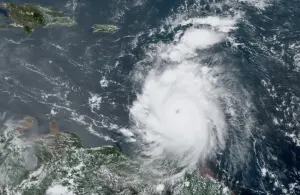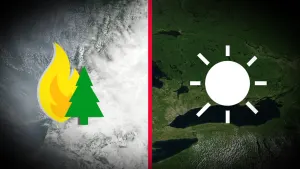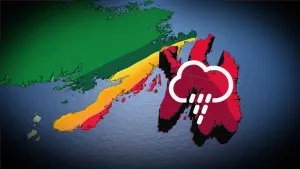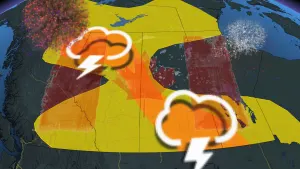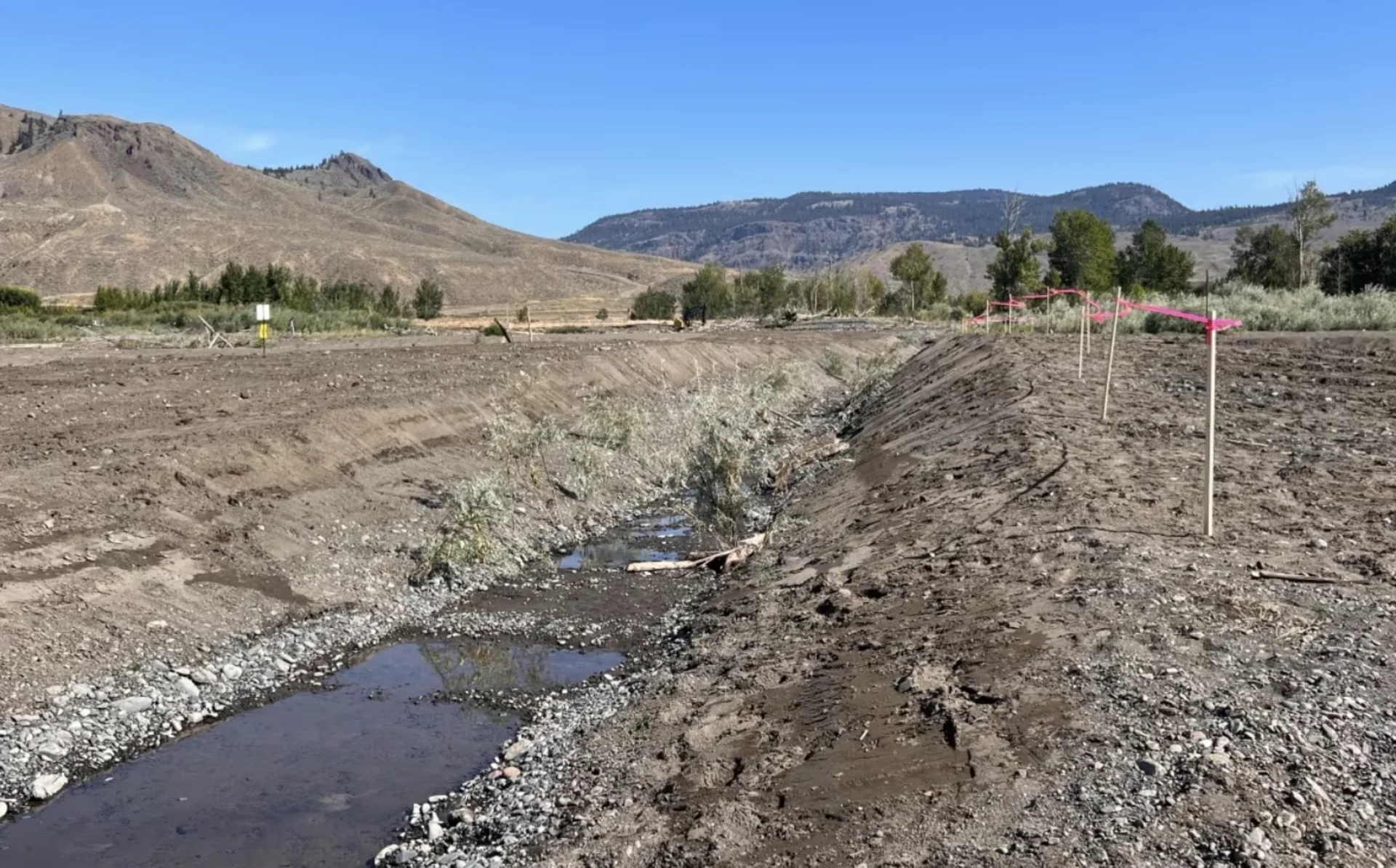
Efforts underway to save salmon trapped in B.C. lake due to drought
Biologists are lending a helping hand to salmon in the B.C. interior that are struggling to make it to their spawning grounds due to severe drought conditions.
Jason Hwang, vice-president of salmon with the Pacific Salmon Foundation, has joined Sarah Ostoforoff, a habitat restoration biologist with Fisheries and Oceans Canada, at Kamloops Lake to reconnect it with Tranquille Creek so pink salmon currently trapped in the lake can start their spawning journey.
The water in the creek is too low for fish to navigate, so the duo is spearheading a fish passage project by excavating a new stream bed to re-establish water flows between the river and the lake.
SEE ALSO: Seeking a safe place for one of Canada's most endangered freshwater fish
Hwang says while he is happy the project is underway, he wants policymakers to know it is better to be prepared in future years than scrambling when the situation is already happening.
"I wish we had a plan ahead of time, and maybe this watershed had been managed differently over time so that its condition was already ready for salmon," said Hwang.

Jason Hwang with the Pacific Salmon Foundation and Sarah Ostoforoff from Fisheries and Oceans Canada are working together to help get salmon in the Kamloops area to their spawning grounds after drought dried up their creek corridor. (Doug Herbert/CBC News)
Hwang said the Tranquille Creek salmon passage project is a good example of human intervention that could be co-ordinated at the first sign of deteriorating conditions rather than being undertaken when the fish are already in jeopardy.
While he said drought conditions this year are the worst he has seen, he estimates B.C. already lost hundreds of thousands of juvenile salmon last year, and with this year's pink salmon run being the largest in recent memory, more deaths are likely.
By Oct. 7, 2022, Simon Fraser University researchers had tallied 65,000 dead pink salmon that year. Shocking visuals from salmon counters at the Heiltsuk First Nation in Bella Bella, B.C., showed mass die-offs in that region last fall. Drought conditions are worse this year.
"We are hoping to do everything we can to help, but it could result in problems for years to come," said Hwang.
In August, the Pacific Salmon Commission increased its projections of pink salmon returns this summer to a possible high of 11.6 million, up from an estimate of between 6.1 million and 8.6 million fish.
SEE ALSO: Texas drought reveals 113-million-year-old dinosaur tracks

An excavator works to dig out a new stream bed for salmon to swim in after Tranquille Creek dried up due to drought. (Doug Herbert/CBC News)
Some of those pinks are still milling about in the lake, and it's a race against time for Hwang and Ostoforoff as the coho run starts later this month.
"They are OK there now, but it will be nice to give them something to work toward," said Ostoforoff of the trapped pinks.
She said the project team is also working with local irrigators in the area who have some reservoir reserves to potentially release some water to help move the fish as well.
In addition to drought, Ostoforoff said flooding in recent years has brought more material into the lower portion of Tranquille Creek, making it unpassable.

The new waterway will be used by pink and coho salmon with the latter run expected toward the end of September. (Doug Herbert/CBC News)
Ostoforoff is working to make the artificial trench feel as natural as possible for the salmon by putting brush along the sides of it, which also creates shade. Salmon can become stressed if water temperatures are too warm, which has resulted in mass mortality events in the past, according to Hwang.
Last week, Fisheries and Oceans Canada found that "stressful environmental conditions" likely killed hundreds of salmon and trout in the Cowichan River in mid-July.
More than 80 per cent of B.C.'s water basins are experiencing level 4 or 5 drought conditions, meaning ecological and economic damage are likely or almost certain, according to the province and environmental experts.
Without an end in sight to dry conditions, the province says it's impossible to predict the extent of the "long-reaching" damage to wildlife, land and livelihoods.
"It is unlike any kind of drought conditions the province has ever faced and, in my opinion, truly is a sleeping giant of a natural disaster that we are challenged with right now," Emergency Preparedness Minister Bowinn Ma said on Thursday.
See the world's first wild salmon marine conservation farm in action:
This article was originally published for CBC News. Contains files from Doug Herbert and The Canadian Press.






